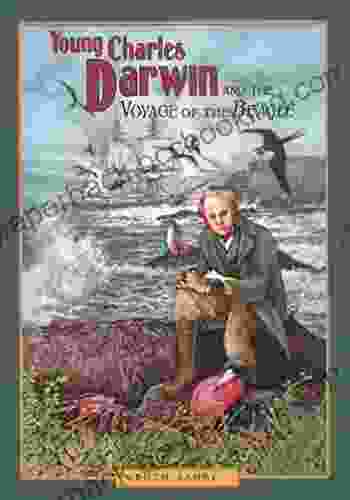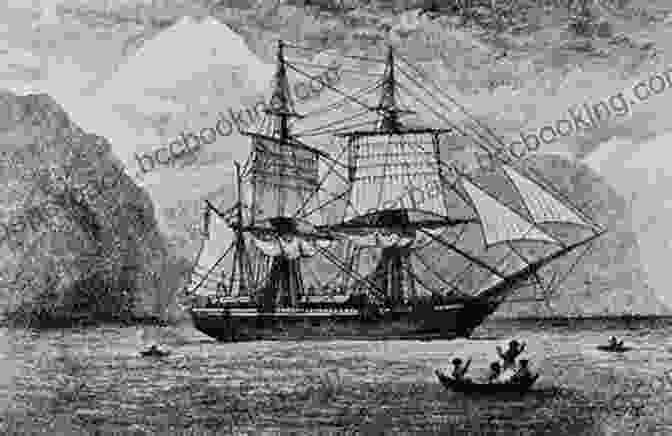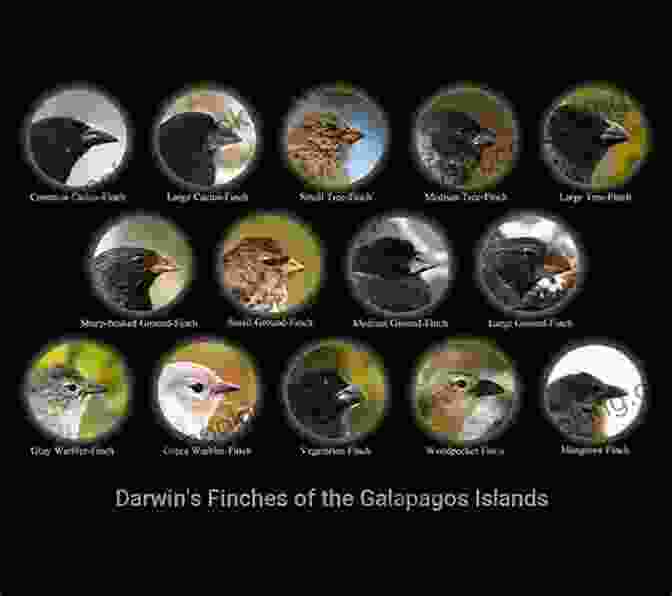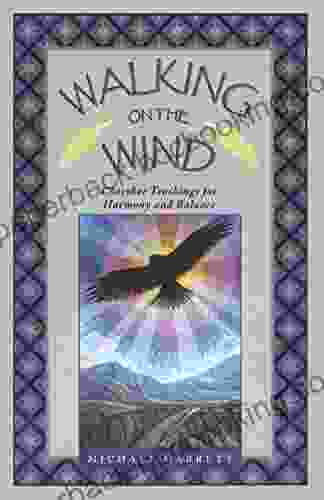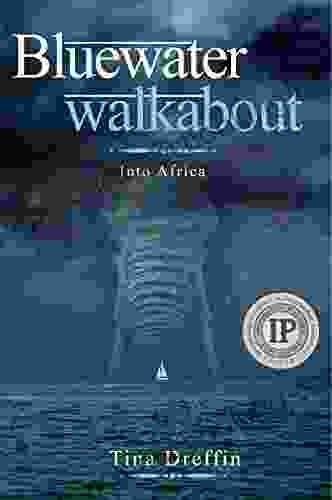Sail the High Seas with Charles Darwin: Unlocking the Mysteries of the Beagle's Voyage

On December 27, 1831, a young naturalist named Charles Darwin embarked on a life-changing journey that would forever alter the course of scientific history. As a passenger aboard the HMS Beagle, Darwin set sail on a five-year expedition to the uncharted regions of the world, embarking on a path of discovery that would culminate in his groundbreaking theory of evolution.
4 out of 5
| Language | : | English |
| File size | : | 3896 KB |
| Text-to-Speech | : | Enabled |
| Enhanced typesetting | : | Enabled |
| Word Wise | : | Enabled |
| Print length | : | 98 pages |
| Screen Reader | : | Supported |
The HMS Beagle and Its Curious Crew
The HMS Beagle was a small ship, just 90 feet long and 24 feet wide. It was commanded by Captain Robert FitzRoy, a devout Christian who sought to prove the divine creation of the world. However, FitzRoy had an astute eye for scientific talent and invited Darwin aboard as the ship's official naturalist.
Darwin, a young and eager geologist, was thrilled at the prospect of exploring the vast natural world. He carried with him a passion for observation and a keen interest in the diversity of life on Earth. Little did he know that this voyage would provide him with the evidence that would revolutionize our understanding of the natural world.
Exploring the World's Wonders
The Beagle's voyage took Darwin to some of the most remote and fascinating corners of the globe. He witnessed the towering glaciers of Patagonia, the lush rainforests of Brazil, and the desolate shores of the Galapagos Islands. It was in the Galapagos, with its unique and diverse fauna, that Darwin began to piece together the puzzle of evolution.
Darwin noticed that different species of finches on the different islands had subtle differences in their beaks. He realized that these variations allowed the birds to adapt to the specific food sources available on each island. This observation, combined with his meticulous studies of fossils and geological formations, led Darwin to a profound realization.
The Birth of Evolution
Darwin proposed that species are not fixed but rather evolve over time through a process of natural selection. Over many generations, individuals with favorable traits are more likely to survive and reproduce, passing on their genes to their offspring. This process gradually leads to the accumulation of genetic changes, resulting in the emergence of new species.
Darwin's theory of evolution was met with great controversy and resistance at the time. However, its simplicity and explanatory power eventually led to its widespread acceptance. Today, evolution is a cornerstone of modern biology, informing our understanding of everything from the diversity of life on Earth to the origins of our own species.
Unveiling the Secrets of the Natural World
In addition to his groundbreaking work on evolution, Darwin made significant contributions to other fields of natural science, including geology, zoology, and botany. His observations on the distribution of plants and animals provided valuable insights into the interconnectedness of the natural world.
Darwin's meticulous notebooks, filled with sketches, descriptions, and theories, provide a testament to his relentless curiosity and unwavering commitment to unraveling the mysteries of the natural world. His work has inspired generations of scientists and continues to shape our understanding of biology today.
The Legacy of Charles Darwin
Charles Darwin's voyage aboard the HMS Beagle was a pivotal moment in the history of science. His discoveries and theories forever changed our understanding of the natural world and laid the foundation for modern biology. Today, Darwin's work continues to inspire and inform scientists, educators, and all those who seek to understand the wonders of the natural world.
4 out of 5
| Language | : | English |
| File size | : | 3896 KB |
| Text-to-Speech | : | Enabled |
| Enhanced typesetting | : | Enabled |
| Word Wise | : | Enabled |
| Print length | : | 98 pages |
| Screen Reader | : | Supported |
Do you want to contribute by writing guest posts on this blog?
Please contact us and send us a resume of previous articles that you have written.
 Book
Book Novel
Novel Page
Page Chapter
Chapter Text
Text Story
Story Genre
Genre Reader
Reader Library
Library Paperback
Paperback E-book
E-book Magazine
Magazine Newspaper
Newspaper Paragraph
Paragraph Sentence
Sentence Bookmark
Bookmark Shelf
Shelf Glossary
Glossary Bibliography
Bibliography Foreword
Foreword Preface
Preface Synopsis
Synopsis Annotation
Annotation Footnote
Footnote Manuscript
Manuscript Scroll
Scroll Codex
Codex Tome
Tome Bestseller
Bestseller Classics
Classics Library card
Library card Narrative
Narrative Biography
Biography Autobiography
Autobiography Memoir
Memoir Reference
Reference Encyclopedia
Encyclopedia Larry White
Larry White William Macaskill
William Macaskill Mark Seal
Mark Seal Roy Macgregor
Roy Macgregor Samra Habib
Samra Habib Walker Deibel
Walker Deibel Matthew Rudy
Matthew Rudy Mei Yu
Mei Yu Kyle Graves
Kyle Graves Mark Harrison
Mark Harrison Michael Tyler
Michael Tyler Raymond Goldwater
Raymond Goldwater Sue Stauffacher
Sue Stauffacher Leonhard Euler
Leonhard Euler Susan Kathleen Hartung
Susan Kathleen Hartung Natalia Hailes
Natalia Hailes Kristin Cashore
Kristin Cashore Mark Purnell
Mark Purnell Steve Angers
Steve Angers Michael Tlanusta Garrett
Michael Tlanusta Garrett
Light bulbAdvertise smarter! Our strategic ad space ensures maximum exposure. Reserve your spot today!
 Martin CoxFollow ·12.6k
Martin CoxFollow ·12.6k Carlos FuentesFollow ·14.1k
Carlos FuentesFollow ·14.1k Cruz SimmonsFollow ·13.3k
Cruz SimmonsFollow ·13.3k Carlos DrummondFollow ·8.8k
Carlos DrummondFollow ·8.8k Quincy WardFollow ·12.8k
Quincy WardFollow ·12.8k Alvin BellFollow ·3.1k
Alvin BellFollow ·3.1k Andy ColeFollow ·3.5k
Andy ColeFollow ·3.5k E.E. CummingsFollow ·13.7k
E.E. CummingsFollow ·13.7k

 E.M. Forster
E.M. ForsterBluewater Walkabout: Into the Pacific
An Unforgettable...

 Joseph Foster
Joseph FosterUnlock the Secrets of Standardized Test Success with Test...
Are you tired of struggling with standardized...

 Joe Simmons
Joe SimmonsUnlock Learning with Flash Cards for Kindergarten:...
Ignite a Passion for...

 Raymond Parker
Raymond ParkerJourney into the Enchanting World of "The Heart Kingdom"...
A Timeless Tale of Love,...
4 out of 5
| Language | : | English |
| File size | : | 3896 KB |
| Text-to-Speech | : | Enabled |
| Enhanced typesetting | : | Enabled |
| Word Wise | : | Enabled |
| Print length | : | 98 pages |
| Screen Reader | : | Supported |


